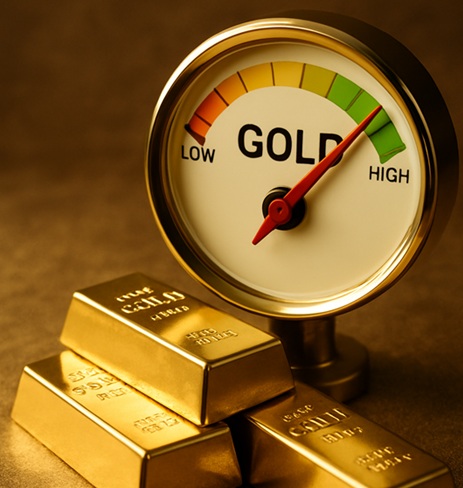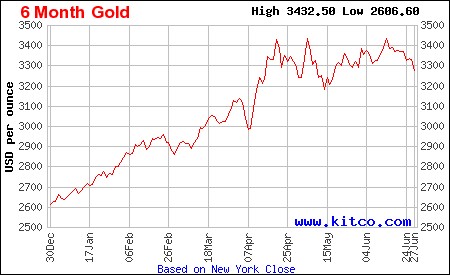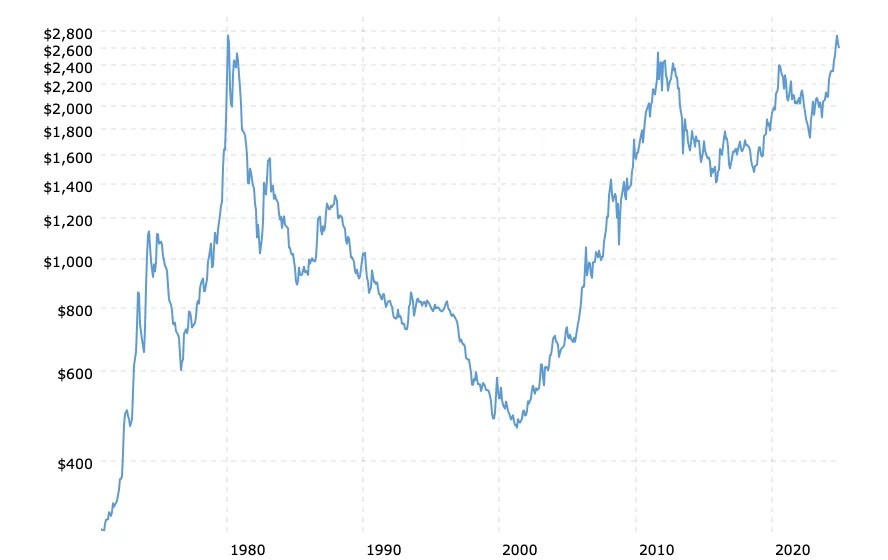“Will Gold Hit $3460?” - Follow-up
 In mid-March, I wrote the following:
In mid-March, I wrote the following:
"The U.S. dollar has lost approximately 75% of its purchasing power since 1980. What this means is that it costs about four times as much today for comparable goods and services as it did in 1980.
In order for the gold price to fully reflect the loss in USD purchasing power, it would need to be $3460 oz. today. As it is, gold is priced at $3045 oz., more than $400 oz. cheaper than its inflation-adjusted high in 1980."
The intraday high for gold in January 1980 was $843 oz. The current inflation-adjusted equivalent of $843 oz. is $3463 oz. In my original article, I rounded the number to $3460 for simplification.
In conclusion, I asked:
"Will gold reach $3460? It's possible. A 14% surge from here would do it."
The answer came quickly as gold surged in price by more than $400 oz. in April. The price action is shown on the chart (source) below...

The gold price did not reach $3460, but has peaked now, on three occasions, just above the $3430 mark.
Practically speaking, though, it is reasonable to say that gold has now matched its intraday price peak of $843 oz. in 1980.
Where Do We Go From Here?
After its recent peak at $3435 in April, the gold price declined to $3171, a drop of more than 7%. After last week's action, gold appears to be headed back to the same level.
Beyond that, the gold price could easily fall back to $3000 oz. or lower.
The upside barrier for the gold price could be more important that any downside price targets. In other words, the gold price is not likely to push through $3500 very soon, regardless of how well it is supported at current prices or lower.
Gold's higher price over time is a reflection of the U.S. dollar's loss of purchasing power. It is not a question of "how high can gold go?" but rather "how much purchasing power has the dollar lost?"
Once the gold price reaches a point that reflects the dollar's loss of purchasing power up to that point, it has gone about as far as it can go, for the time being.
Afterwards, the price can decline or go nowhere for years. This can be seen on the chart (source) below...
The increase in the gold price from $35 oz. in 1970 to $843 oz. in January 1980 reflected the effects of inflation on the dollar's purchasing power over the previous four decades. After finding its inflation-adjusted price, gold declined.
The gold price peak of $1895 oz. in 2011 accounted for the effects of inflation after 1980 and up until 2011. Thereafter, the price declined for nearly five years.
The recent gold price peak at $3435 oz. reflects the dollar's loss of purchasing power since its 2011 peak at $1895.
All three periods of increasing gold prices were approximately ten years in length (1970-80; 2001-2011, 2015-25). The first two periods (1970-80; 2001-2011) were followed by multi-year declines.
Time will tell us if something similar happens this time.
CONCLUSION
Gold’s recent price peak at $3435 oz. likely represents the culmination of its latest inflation-adjusted advance.
With the dollar’s loss of purchasing power fully accounted for, history suggests that gold could enter a prolonged period of stagnation or decline, much like what happened after the 1980 and 2011 peaks.
A drop below $3000 oz. wouldn’t be surprising. For now, gold appears to have exhausted its momentum.
*********
















